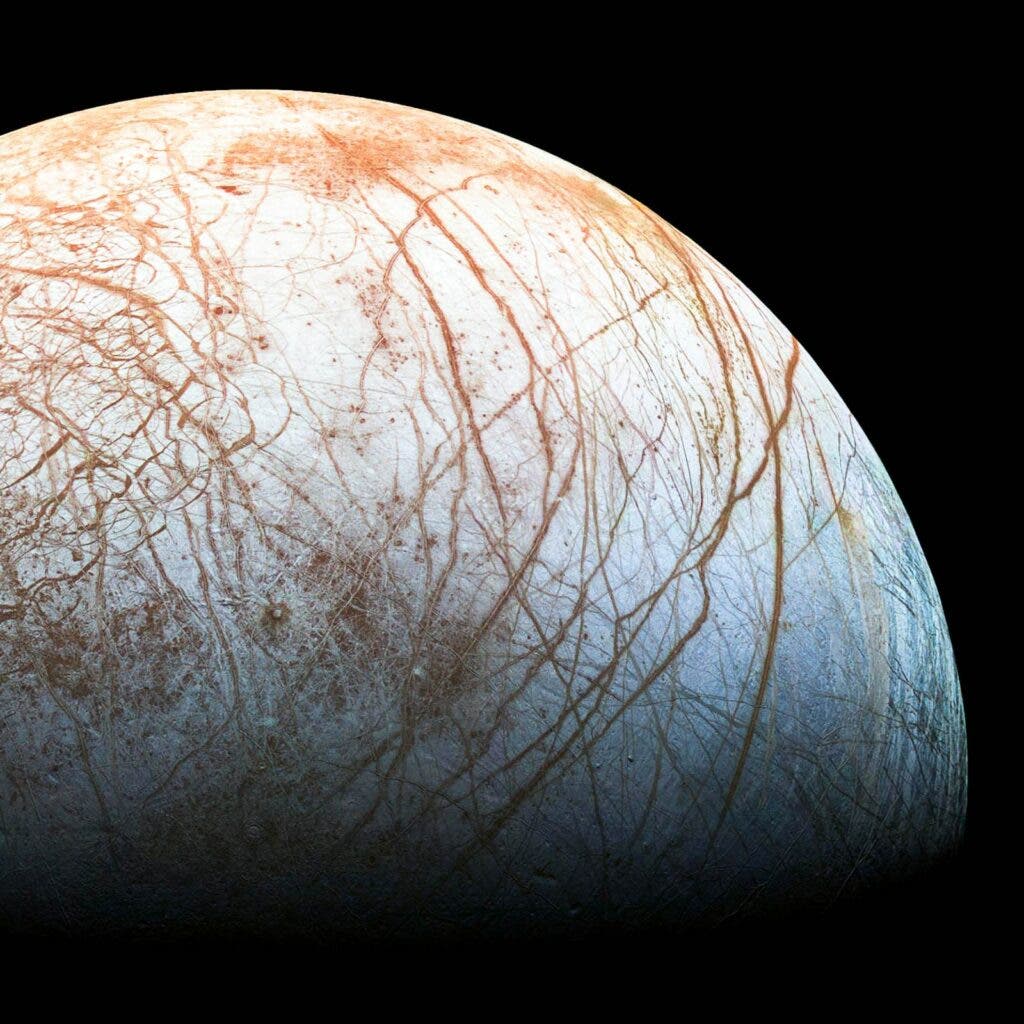Spectral analysis of Hubble data on the Jovian satellite found traces of long-lasting water in Europa’s atmosphere. The same technique had been previously applied to Ganymede, another one of Jupiter’s satellites, but researchers were surprised to see the same thing on Europa because its surface temperatures are so much lower.

Jupiter’s moons are frozen on the surface. They’re far away from the sun and just don’t receive enough solar radiation to maintain oceans of liquid water like Earth. But there’s more to some of these moons than meets the eye. For instance, Europa is thought to have an ocean of liquid water under the frozen surface, due to friction. The gravitational pull from Jupiter causes the moon’s ice shell and interior to flex during the course of its orbit (much like how we have tides on Earth). This movement produces friction, friction produces heat, and this heat is enough to melt a big chunk of Europa’s subsurface to liquid water.
In the past few years, astronomers have been watching Europa closely because having an ocean of liquid water (even under its surface) makes it a likely candidate to host life. Several studies have brought evidence that supports the existence of water on Europa, but what makes this study different is that it brings evidence of some non-solid water on the surface of the satellite.
It’s not a lot — just thin traces of vapor — but even these traces are surprising on Europa’s surface. The reason is that Europa reflects more sunlight than Ganymede, keeping its surface temperature much colder. The daytime high on Europa is a whopping -260 degrees Fahrenheit (-162 Celsius) — and that’s not a temperature you’d expect to find water at.
“The observation of water vapor on Ganymede, and on the trailing side of Europa, advances our understanding of the atmospheres of icy moons,” said Roth. “However, the detection of a stable water abundance on Europa is a bit more surprising than on Ganymede because Europa’s surface temperatures are lower than Ganymede’s.”
Previous findings of water vapor on Europa were associated with water plumes erupting through the ice — analogous to volcanoes or geysers here on Earth. These plumes can extend more than 60 miles (96 km) high, producing transient blobs of vapor in the moon’s atmosphere. But this appears to be different.
Looking at data from 1999, 2012, 2014, and 2015, Hubble found evidence that some of the water vapor is coming directly from the ice on the surface. This ice sublimates, transforming directly from solid ice into gas, and it appears to be a continual process. In other words, small parts of Europa’s surface ice are constantly transforming into water vapor, at least on the trailing side of the moon.
An earlier paper from 2021, also co-authored by Roth, found similar traces of water vapor in the atmosphere of Jupiter’s moon Ganymede. However, one limitation of both these papers is that they are indirect observations. Simply put, it’s not exactly water that they’re seeing — of oxygen, a major component of water. In theory, there could be other elements containing oxygen (carbon dioxide, lone oxygen molecules, hydroxide), but nothing seems to fit the data as well as water. It’s about as solid a conclusion as you can draw from an indirect observation, although future work will still be needed to confirm the finding.
Luckily, both NASA and the ESA are preparing missions to explore Europa in more detail. NASA’s Europa Clipper is set for launch in 2024, while ESA’s Jupiter Icy Moons Explorer is set for launch in August 2022 and will reach Jupiter in July 2031. These two missions are expected to greatly increase our understanding of these frozen worlds and offer more hints to their potential habitability.


